“一带一路”深刻影响欧亚经济重庆内陆开放型经济发展机遇与路径
2015-11-03曾睿吴岸
□ 文/本刊记者 曾睿 图/吴岸
“一带一路”深刻影响欧亚经济重庆内陆开放型经济发展机遇与路径
□ 文/本刊记者 曾睿 图/吴岸
日前,由重庆国际战略研究院主办的中国“一带一路”建设对欧亚经济格局的影响——重庆内陆开放型经济发展机遇与路径研讨会在四川外国语大学召开,来自美国、德国、中国的十余位专家学者参加了研讨会,共同讨论“一带一路”将对欧亚经济格局带来的深刻影响以及其中蕴涵的“重庆机遇”。四川外国语大学党委书记兼重庆国际战略研究院院长明国辉、重庆市对外贸易经济委员会副主任熊林出席了论坛活动。
在当天的论坛上,先后有四川外国语大学党委书记兼重庆国际战略研究院院长明国辉、重庆市对外贸易经济委员会副主任熊林、国际席勒学会主席海尔格、对外经贸大学副校长林桂军、中国国际问题研究所世界经济研究所所长姜跃春、重庆大学可持续发展研究院副院长蒲勇健、中国前驻孟买总领事刘友法、美国EIR杂志编委丹尼斯以及广东国际战略研究院秘书长李青、天津国际发展研究院秘书长冯雷鸣、重庆国际战略研究院秘书长杨柏等进行了主题发言。国内外的专家们一致认为中国“一带一路”国家战略的不断推进,将必然对欧亚经济格局带来深度影响,也必然将对重庆建设内陆开放型经济带来重大机遇。

明国辉
四川外国语大学党委书记兼重庆国际战略研究院院长
以中西交融的视角 为重庆经济及“一带一路”建设提供思考
随着“一带一路”战略构想的提出,学界掀起了广泛的研究热潮,重庆国际战略研究院也于2014年12月应运而生。研究院由重庆市对外贸易经济委员会与四川外国语大学共同成立,希冀搭建一个政界、学界、业界共同研究重庆市国际战略问题的平台,为重庆市全方位开放的战略格局提供政策制定参考。研究院成立近一年以来,积极为重庆市的发展规划提供决策参考,向重庆市政府报送的《关于促进重庆市口岸经济发展的对策建议报告》,受到市政府主要领导及分管领导的圈阅及批示。
同时,研究院还先后与丹麦、日本、韩国、澳大利亚、法国、匈牙利等国的专家学者进行了学术交流。2014年12月,研究院举办了“渝新欧”沿线重点交往国研究项目建设专家咨询座谈会。2015年5月,接访了法国国防高等研究院代表团,双方就“一带一路”及中法经贸问题进行了学术交流。此外,研究院还多次参加重庆市内外高层次学术会议,如“一带一路”建设对中缅关系的启示和机遇研讨会、第二届中印尼三方会议、全球经济一体化形势下的企业家行动研讨会、中美智慧城市合作暨企业对接会,与《重庆与世界》杂志就重庆经济的未来发展进行对话等。
未来,研究院将围绕“渝新欧”国际铁路沿线重点交往对象国进行信息资源收集,具体包括产业信息数据库、投资信息数据库和贸易信息数据库的建设,以此搭建国别数据资源平台。对“渝新欧”铁路沿线重点交往对象国产业发展、产业评价、投资风险、投资政策、投资机会、与西部地区贸易发展等方面展开深入研究,为政府相关部门及企业对“渝新欧”沿线国的投资和合作提供决策咨询。并且准备以这些信息与数据为基础,出版关于“一带一路”战略的蓝皮书。希望我们的工作能够以中西交融的视角为重庆经济及“一带一路”建设提供思考,为产学研一体化合作作出积极探索。

熊 林
重庆市对外贸易经济委员会副主任

海尔格教授
国际席勒学会主席
发挥地方性特色新型智库作用 承载决策支持重任
2013年9月、10月,习近平总书记分别提出了共建“丝绸之路经济带”和“21世纪海上丝绸之路”,即“一带一路”的战略构想,由此形成了我国全方位对外开放的新格局。共建“一带一路”顺应世界多极化、经济全球化、文化多样化、社会信息化的潮流,秉持开放的区域合作精神,致力于维护全球自由贸易体系和开放型世界经济。
共建“一带一路”旨在促进经济要素有序自由流动、资源高效配置和市场深度融合,推动沿线各国实现经济政策协调,开展更大范围、更高水平、更深层次的区域合作,共同打造开放、包容、均衡、普惠的区域经济合作架构。共建“一带一路”符合国际社会的根本利益,彰显人类社会共同理想和美好追求,是国际合作以及全球治理新模式的积极探索,将为世界和平发展增添新的正能量。近年来,重庆市认真贯彻党的十八大和十八届三中全会精神,在中央有关部委的支持下,在五大功能区域发展战略指引下,积极融入“一带一路”国家战略,大力推进内陆开放高地建设。通过围绕“大通道、大通关、大平台”等开放要素的构建,重庆形成了铁水空三个国家级枢纽、三个一类口岸、三个保税区的“三个三合一”开放平台。“十三五”期间,重庆将瞄准“一带一路”战略支点地位,着力建设内陆开发高地。当然,重庆正在把握这难得的历史机遇,努力扩大内陆开放新优势,不断拓展内陆开放的广度和深度,就需要由根植于重庆区域经济发展实际的地方性特色新型智库向世界“说明重庆”,帮助重庆“解读世界”,导航重庆国际经贸发展,迎接新常态。为此,在重庆市委市政府的大力支持下,于2014年12月18日,我委与四川外国语大学共同发起成立了重庆国际战略研究院。作为重庆唯一一家专门从事国际问题研究的新型智库,重庆国际战略研究院专注于国家开放战略下重庆市有关国别经济、国际贸易、国际投资、国别法律与国际规则等多个领域的国际经贸问题研究。目前,研究院作为地方特色型智库的建设尚处于初级阶段,无论在队伍还是体制建设上都还在探索之中。在此我们希望在今后一个时期,研究院以2015年1月20日中办、国办印发的《关于加强中国特色新型智库建设的意见》为指导,加强与国内外优秀智库之间的合作与交流,积极参与或主办相关主题国际学术研讨会,深入探索特色新型智库发展之路,以更好发挥研究院“转知成智”的功能,以及“资政”、“启智”、“聚才”等作用,对经济发展、对外开放过程中层出不穷的国际经贸问题作出科学解答,承载起重庆市委市政府有关国际经贸战略决策支持的重任。
新丝绸之路将成为世界大陆桥
二战结束以来最严重的难民灾,再次表明欧盟的内部团结荡然无存,那些经常被提及的价值理念,例如民主、人权和国际条约的有效性,在欧洲大部分地区已经丧失了。这一危机揭示了欧洲国家自我认知当中的巨大裂痕,显示不可能一边坚持跨大西洋机构的官方宣言,一边维护自身的现有利益。
虽然难民危机对于逃难的百万民众来说是悲惨的,但它可能有好的一面:越来越多的欧洲人认识到,欧洲的政策必须根本改变,难民涌出自己国家的原因必须得到消除,除了对这些原因仔细分析,还要设立西南亚和非洲的全面经济发展项目。首先,德国政府的180°变化以及保证接纳所有叙利亚难民,这是一个额外的机会,给欧洲带来变化。大多数德国人所表现出的慈善可以成为一个新模式的指引点,使得欧洲更愿意参与丝绸之路经济带政策的合作。但这必须更为明确。新丝路政策的吸引力在于中国过去30年经济奇迹这一鼓舞人心的实例,它向世界上每个有心借鉴的国家提供了方法。一带一路愿景不过就是到处复制中国的经济奇迹,在南欧、西南亚、非洲。
2014年,国际席勒学会与全球策略评论杂志一起推出了370页的综合研究报告,题为“新丝绸之路成为世界大陆桥”,该报告全面提出了世界经济重建的计划。这些项目的某些部分可以立刻成为重建和发展欧洲、巴尔干、西南亚和非洲的经济开发纲要,应当被列入国际日程。在我看来,新丝路和一带一路的推行提供了解决欧洲面临的诸多危机的唯一的机会。

林桂军教授
对外经济贸易大学副校长

姜跃春教授
中国国际问题研究院世界经济研究所所长
“一带一路”将使中国在全球价值链中实现发展与进步
“一带一路”是新的强大动力。“一带一路”不仅支持企业链条式转移、集群式发展,而且使得上下游产业链协同布局,建立起研发、生产和销售的完整体系。
在全球价值链中快速增长的同时,也不可忽略区域贸易自由化的推动。发展中国家为了参与全球价值链,主动与发达国家谈判自由贸易协定。中国的自贸区战略可以表述为:立足周边、辐射“一带一路”、面向全球的高标准自贸区网络。我国设立自贸区要考虑的因素有:全球价值链;引进外资和技术;出口市场(传统市场,拓展新市场);能源资源供应安全;过剩产能输出。
这其中的战略重点方向应该是:面向发达国家稳定传统市场、整合全球价值量、引进先进技术,促进国内改革;面向“一带一路”沿线国家和地区的重点则是拓展新市场、输出过剩产能、能源、资源供应安全、战略再平衡。只有深入研究并解决好这些问题,才能进一步在全球价值链中实现发展与进步。
重庆将在“新丝路”中发挥自身独特的优势
“一带一路”倡议对中国经济的影响主要在以下三点:首先,基础设施建设是中国的优势所在。中国的基础设施建设已经取得了举世瞩目的成就。目前中国在能源、通信、铁路、高铁、公路、港口、机场、口岸等各个领域的建设取得了明显成果,在高铁、机场等许多领域都已处于世界先进水平,甚至超越了发达经济体。此外,中国的成本控制能力也很强,并在走出去开展海外工程建设的过程中,积累了丰富的国际经验。其次,它能够构建中国经济全球产业链。过去几十年,中国企业处于产业链的低端,依托”一带一路”的政策,能够改变中国企业在全球产业链上的地位,为追求获得利润最大化创造条件。第三,加快中国国内经济转型升级。5月18日,国务院发布《中国制造2025》。“这是我国实施制造强国战略第一个十年的行动纲领。它瞄准新一代信息技术、高端装备、新材料、生物医药等战略重点,引导社会各类资源集聚,推动优势和战略产业快速发展。在能源与交通基础设施互联互通方面,“一带一路”倡议可以引领“中国制造2025”战略落地实施,“中国制造2025”战略的落地实施又为“一带一路”战略做好坚实的产业基础支撑。两大战略的无缝对接将会对我国实施创新驱动发展战略、加快经济转型升级具有十分重要的战略意义。
关于重庆在“一带一路”建设中的准确定位这一问题,我的观点是,重庆位于西南门户,是中西部地区唯一的直辖市和国家中心城市,在“新丝路”经济带建设中居于战略节点地位,应该发挥战略支点作用。向西北通过“渝新欧”国际铁路联运,成为欧亚大通道的战略起点;向东面通过长江黄金水道,成为长江经济带的联结枢纽;向西南通过云南和滇缅公路直达中印孟缅经济走廊,连接21世纪海上丝绸之路。当然重庆也具有雄厚的产业基础和巨大的发展潜力。重庆GDP增速、工业产值、进出口贸易、引进外资等多项经济指标,多年稳居中西部前列。200余家世界500强企业落户重庆,食品、能源、物流、旅游等产业稳步发展,医药、电子信息、汽车、装备制造、综合化工、材料等产业集群化、规模化水平不断提高,大数据产业链加速成长,电子商务、离岸金融等新兴服务业异军突起,高端装备制造业亮点纷呈。随着重庆产业优势和产业竞争力不断增强,相信未来重庆一定在“新丝路”经济带发展过程中发挥自身独特的优势,发挥更大的作用。
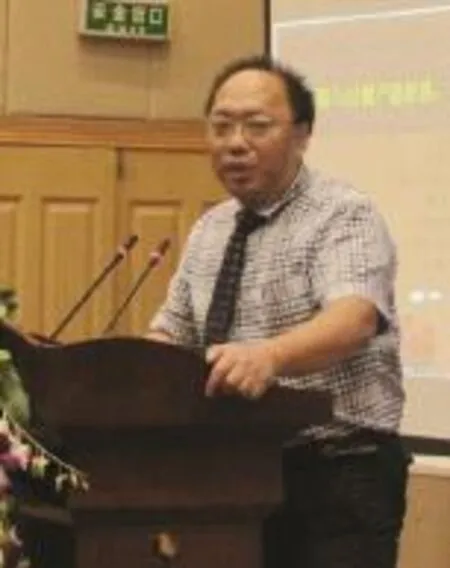
蒲勇健教授
重庆大学可持续发展研究院副院长

刘友法教授
前中国驻孟买总领事
重庆企业融入“一带一路”要重视需求、比较优势、产业延伸
金融危机以来,中国经济产能过剩的问题日益突出。以全球视野看中国产业过剩的行业处于中端水平,理论上拥有较大的产业转移空间。既可以将边际产业转移到劳动密集型的东道国消化产能,又可以将优势产业扩散到发达地区达到技术升级和获取销售网络的目的。但过去我国企业的产能转移实施得并不顺利。
我们认为通过“一带一路”战略,我国产能转移的困境能够得到缓解;水泥、建材、钢铁、能源等多个产业的需求将大大提升。在此背景下,重庆扮演着至关重要的角色。一方面,基于得天独厚的区位优势,用于基础设施建设和资源、能源开发的装备设备可依靠长江黄金水道从东部运往重庆,然后借由渝新欧铁路出境,从而节省运费;另外一方面,重庆的装备制造业在全国范围内也有较强的竞争优势,可为相关设备提供配件供给和维修服务。最后,企业融入一带一路战略需要防范各类风险,而重庆的企业需要充分考虑自身的产品需求、比较优势和注重产业延伸。
对于重庆企业而言,融入“一带一路”战略需要考虑以下3个方面:第一,需求要素,即要找准投资方向,弄清楚“一带一路”沿线国家需要什么。短期来看,基础设施建设是各个国家都迫切需要的,因而可以首先从这方面介入。例如重庆能够生产轨道交通设备,而这些国家可能也需要发展轨道交通。第二,比较优势,“一带一路“沿线国家多是发展中国家,比较优势产品还停留在初级加工品阶段。重庆企业在电器设施和零部件这块可能有一定的比较优势。第三,产业延伸,重庆目前正在大力发展总部经济,相关的产业链条则可以利用人力成本的比较优势延伸到“一带一路“沿线国家去。当然,从现金回报率上看,一带一路战略中的相关投资可能较低。目前中国基础设施投资的平均回报率不到3%,而当投资主体是地方政府投融资平台时,这一比例可能更低。不过站在宏观视角上看,基础设施建设会带来巨大的社会效益。因此,总体上看,一带一路战略带来的投资需求还是为中国过剩的产能找到了新的出路,不仅有利于短期的经济和就业增长,同时还提升了中国的长期发展潜力空间。
中国企业要认真应对两个领域的安全问题
经济全球化已将我国纳入“地球村”,“一带一路”建设势将推动我国经济疆界和利益疆界同时向国际范围延伸。其间,我国政府和企业各界在组织和参与相关项目和企业合作进程中需要认真绸缪和应对传统和非传统两个领域的安全问题。
传统安全风险。研究表明,在丝路沿线迄今仍遗留二战遗留问题。朝鲜与韩国剑拔弩张,随时有爆发冲突的危险。随着美国逐步从阿富汗撤军,阿富汗重建与民族和解正是提上国际社会议事日程。然而战争彻底摧毁了传统民族文化,摧毁的民族经济,撕裂了民族凝聚纽带,培育的大量恐怖主义和极端势力基地,进而使得阿富汗成为“一带一路”建设高危国家。东欧相关国家因领土和民族纠纷正愈益走向武装冲突的边缘。美日携手东亚一些小伙伴在东海和南海刻意挑起事端,影响东盟集体参与“一带一路”建设的意愿。
非传统安全风险。“一带一路”建设行将在传统安全和非传统安全事件高发区推进。其间,我国与丝路沿线国家行将面临诸多源于非传统安全领域的威胁。研究表明,非传统安全问题从产生到解决都具有明显的跨国性特征,不仅威胁到某个国家的安全利益,而且有可能殃及周边国家乃至整个人类利益;不仅对某个国家构成安全威胁,而且可能对别国的国家安全不同程度地造成危害。例如,地球臭氧层的破坏,生物多样性的丧失,埃博拉等染性疾病的传播等,不仅是针对某个国家的安全威胁,而且关系到全人类的整体安全利益。其间,有关各国可能面临的安全威胁体现在下列领域:专属经济区管辖权、资源和能源、恐怖主义、毒品、艾滋病、海盗、非法移民、环境安全、金融安全、信息安全,等等。上述任何问题处置不当,均有可能影响到国家经济安全。
研究表明,在网络信息和高科技作用下,恐怖主义和极端势力对主权国家、公司企业和各界居民的侵扰与攻击手段与日俱增。例如,极端组织“伊斯兰国”正在中东地区挑起动乱。研究表明,传统安全威胁从萌芽、酝酿、激化到导致武装冲突,往往会通过一个矛盾不断积聚、性质逐渐演变的渐进过程,往往会表现出许多征兆,人们可据此而采取相应的防范措施。然而,许多非传统安全威胁市场突然降临,使得相关国家、公司企业和个人陷入仓促应对窘境。例如,20世纪80年代以来,艾滋病、“疯牛病”、口蹄疫、萨斯、禽流感、埃博拉等卫生领域,与此同时,现代人类在探索地震、海啸、飓风等自然灾害还面临诸多未解之谜,加之诸多国家经济与科技发展水平残差不齐,导致许多国家缺乏对灾害的早期预警能力,相关安全事件突然爆发,其扩散态势之猛,影响之严重,危害性之大,均远远超出相关国家乃至国际社会的预料,进而给“一带一路”相关项目和企业带来无可估量的政治、经济损失。利比亚撤侨事件更是充分表明,境外中资企业正成为恐怖分子和敌对势力袭击的目标。中国人在国外无敌人的境况已经成为历史。

丹尼斯教授
美国EIR杂志编委

李青教授
东国际战略研究院秘书长
对美国参与“一带一路”合作保持乐观
我给你们带来的是,关于美中近期围绕“一带一路”全球发展计划开展合作的非常乐观的观点。我乐观的基础,在于习近平主席提出的共赢战略和哲理在美国引起了深度反响,这一反响源于美国建国的宪法原则。美国参与一带一路合作的这些前瞻性领域,必然要通过在全球范围内运用格拉斯思迪加尔法则,对当前破产的跨大西洋体系进行全面重组,根据汉密尔顿设计的原则创造新的信贷体系(而不是货币金融体系)。
金砖国家创建新开发银行和应急储备资金,是这种重组活动的开始,目的在于向大规模发展项目提供资金,而不是喂养恶化那些致命的投机癌症。林登和赫尔加拉鲁旭因此呼吁美国和欧洲加入金砖国家这一进程,放弃华尔街和伦敦,让他们走向应得的命运结局:破产和葬礼。要达到这一目标,美国不得不回归他更好的模式:莱布尼兹的实体经济原则,也是这个国家的建国基础。那就是我保持乐观的原因。
急需大量培育跨国公司与经营技术人才
广东实施“海上新丝路”建设战略的关键是培育投资主体跨国公司。一是培育一批建设“海上新丝路”投资和经营跨国主体。重点鼓励和扶持具有一定规模实力、品牌优势和市场基础的大型企业集团、行业骨干企业、高新技术企业、名牌产品企业到海外各国设立贸易公司、建立生产企业、开展各种国际经济技术合作。二是鼓励跨国企业对“海上新丝路”沿线各国投资,积极参与资源开发的合作。着力推动跨国企业对外大型并购项目、大型资源开发项目、大型承包工程项目给予优惠贷款、贴息资助或政府担保。三是与各国企业进行合作,通过长期贸易协议、带资承包、参股、BOT等方式,承揽水利、交通、能源等基础设施建设项目,支持有实力的企业对外投资和承包高技术工程业务;鼓励企业投资能源、建筑、电信和金融等重点行业,通过并购、重组、联合等多种形式,集中力量开发矿产、原油等矿产资源,建立多元、稳定、长期可靠的资源供应基地。
另一个非常重要的问题是,共建“海上新丝路”需要大量各类人才,特别需要熟练掌握有关国家语言,了解各国文化和习俗,懂经济、外贸和金融,而且对有关国家的国情、法律、政策有深刻了解的高级人才。培养一批跨国经营人才和技术人才,才能推动“海上新丝路”战略的实施及其与中国经贸关系持续发展。需要政府通过人才战略,加强国际化人才的培育力度,可以把国内骨干人才派到国外去学习和工作,在国外增长才干,培养一批懂经营规律,会管理、技术精、适应国际竞争需要的专门人才;引进海外留学生、在海外工作过的人才,聘请一些具有海外留学经历的高校教师来培养高级人才。
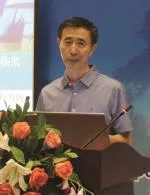
冯雷鸣教授
天津国际发展研究院秘书长

杨柏教授
重庆国际战略研究院秘书长
“一带一路”建设中应重视发挥智库作用
智库是国家软实力的重要载体,在对外交往中发挥着不可替代的作用。自“一带一路”提出以来,各个智库积极贡献研究力量,从各维度建言献策,充分发挥了智库在治国理政中的重要作用。但是目前我国还没有具有较大影响力和国际知名度的高质量智库,高水平的研究成果也不够多,参与决策咨询缺乏制度性安排,智库建设缺乏整体规划,资源配置不够科学等。我国高校在周边国家研究方面力量相对薄弱,急需增强研究力量,深化“一带一路”国家国别研究,与有关国家智库构建合作网络,产出丰富的智库成果。在服务国家“一带一路”战略背景下,“一带一路”新战略与大国外交等重点问题成为许多智库研究的热点。
“一带一路”建设中会出现大量需要解决的各种现实问题,从宏观到微观,从文化到社会,从政策到工程,从人力资源到技术瓶颈。需要开展区域与沿线各国社会发展研究,国别、国情、科学研判,经贸与文化交流、国际商务合作研究,人才需求调查与培养研究。开展前瞻性、针对性、储备性政策研究,对“一带一路”建设未来5年、15年、50年的发展做出科学研判、战略思考和超前谋划。我国相关外语类院校应立足“多语种特色”、“跨文化优势”、“产学研平台”和“走出去桥梁”等要素禀赋和功能定位,在人才培养、学术研究、社会服务、人文交流等方面服务共建“一带一路”战略,开展全方位、多层次的培训与咨询,为促进中国与丝绸之路国家的人文交流搭建平台。
促进重庆市口岸经济发展的四点建议
共建“一带一路”战略,开创了我国全方位对外开放的新格局。作为“丝绸之路经济带”、“渝新欧”国际铁路的一个起点,长江黄金水道的一个枢纽点,乃至内地到云南-缅甸-印度洋-波斯湾的一个关键节点,重庆在“一带一路”战略格局中具有发挥“战略支点”作用的巨大潜能。为此,近年来,在党中央、国务院的大力支持下,重庆逐步形成了水陆空三个交通枢纽、三个国家一类口岸、三个保税区“三个三合一”的开放特征,这在我国内陆城市中绝无仅有。重庆如何以2015年4月17日国务院印发的《国务院关于改进口岸工作支持外贸发展的若干意见》为战略指引,抓住口岸新机遇,进一步发挥三个“三合一”内陆开放平台优势,对于重庆打造“一带一路”战略支点地位尤为重要。
世界经济的发展历程揭示,国际化大都市的崛起大多得益于发达的口岸经济。与国内外成熟的口岸地区相比,当前重庆的口岸发展仍处于“欠发达区间”,但距离“发达区间”只有一线之隔。无论是保证制造业与进出口稳定发展的同时大力发展第三产业,保证制造业稳定发展的同时大力发展第三产业和进出口或者制造业,第三产业与进出口齐头并进,都能够实现重庆口岸经济的跨越式发展。我认为,促进重庆市口岸经济发展的对策建议主要有以下四点:
(一)以通用机械行业为突破口,探索全产业链一体化的对外贸易路径;
(二)将“口岸型总部经济”打造为开放型经济新引擎;
(三)以国际化人文口岸为依托助推口岸经济发展;
(四)以制度创新优化口岸经济发展的软环境。
On September 22nd, the International Symposium on Influence of Chinese “The Belt and Road” Initiative (B&R)upon Eurasian Economies and the Opportunity & Pathway of Chongqing Open Inland Economy were convened in Sichuan International Studies University (SISU), which was sponsored and hosted by Chongqing Research Institute for International Strategies (CRIIS). Several specialists and professors from USA, Germany and China were present to discuss B&R's profound impacts on Eurasian economic pattern and its potential“opportunities” for Chongqing. Mr. Ming Guohui, SISU Chancellor and CRIIS President, and Mr. Xiong Lin, Deputy Director of Chongqing Foreign Trade and Economic Relations Commission,attended to this symposium.
At the symposium, Ms. Helga Zepp La-Rouche,Chairwoman of the Schiller Institute, Mr. Lin Guijun, Vice President of University of International Business and Economics, Mr. Jiang Yuechun, President of Institute for World Economy Studies of China Institute for International Studies, Mr. Pu Yongjian, Vice Dean of Institute for Sustainable Development Studies of Chongqing University, Mr. Liu Youfa, former Consul General of China in Bombay, Mr. Dennis Neham Small, Editorial Board of Executive Intelligence Review, Ms. Li Qing, Secretary-General of Guangdong Research Institute for International Strategies of Guangdong University of Foreign Studies, Mr. Feng Leiming, Secretary-General of Tianjin International Institute for Strategic Studies of Tianjin Foreign Studies University, and Mr. Yang Bai, Secretary-General of Chongqing Research Institute for International Strategies gave their wonderful keynote speeches. All these specialists and professors asserted that B&R initiative will impose profound impacts on Eurasian economic pattern and bring great opportunities for Chongqing to develop its inland open economy.

Ming GuohuiChancellor of Sichuan International Studies University and President of Chongqing Research Institute for International StrategiesThoughts on Chongqing Economical Development and B&R lnitiative from lntegrated Perspective of China and the West
Since the B&R strategic initiative was proposed, there has been an upsurge of B&R research from academic field. CRIIS was established in December 2014 in response to this background. The Institute is targeting to build up a platform for studies on Chongqing international strategic issues from political,academic, and industrial fields. In addition, it also attempts to provide Chongqing government consultancy on policy decisionmaking to realize its all-round opening strategic development. Nearly one year since its establishment, the Institute has been very active to make its voice in the Chongqing's development. A report, Suggestions and Countermeasures on Promotion of Chongqing Port Economic Development, has been submitted to Chongqing municipal government and authorities in charge of foreign economic and trade, and appreciated highly and offi cially by the main leaders.
CRIIS has successively conducted academic exchanges with experts and scholars from Denmark, Japan, South Korea,Australia, France, Hungary etc. In addition, the institute has also attended many high level academic conferences inside and outside of Chongqing, such as the seminar on inspiration and opportunity of B&R construction on China-Myanmar relations, the second tripartite meeting among China, India and Nepal, the entrepreneur symposium under the situation of global economic integration, the US-China smart city cooperation and their enterprises docking, and the Chongqing Economic Dialogue by the world and chongqing magazine.etc.
In the Future, CRIIS will focus on the information resource collection of key countries along Yuxin'ou Railway route,including the construction of information databases in industry,investment, and trade, in order to build a national data resource platform. The institute will carry out in-depth researches on these key countries' industry development and evaluation, investment risk, policy, and opportunity, and the trade development with China's western regions, so as to provide Chongqing's relevant government departments and enterprises supports for their decision-making in investment and cooperation with these key countries. And the institute is also going to publish bluebooks on B&R strategy based on these information and datum. He believes that CRIIS will definitely contribute to CQ economic development and our national B&R construction from the perspectives of both China and the west and fi gure out a feasible pathway for the Industry-university-research integration.

Xiong LinDeputy Director of Chongqing Foreign Trade and Economic Relations CommissionExerting the Role of A New Local Type of Think Tank and Undertaking the Responsibility of Strategic Decisions
In September and October of 2013, Chinese President Xi Jinping raised the initiative of jointly building the Silk Road Economic Belt and the 21st-Century Maritime Silk Road, thus forming a new pattern of China's opening up to the outside world. The initiative to jointly build the Belt and Road, embracing the trend toward a multipolar world, economic globalization, cultural diversity and greater IT application, is designed to uphold the global free trade regime and the open world economy in the spirit of open regional cooperation. In recent years, Chongqing is implementing the spirit of the 18th Central Committee of the Communist Party of China and its third Plenary Session. In support of the central authorities, guided by the development strategy of five functional areas, Chongqing also actively integrates into the initiative, and vigorously promotes the construction of open inland highland. With the construction of such open elements as "channel, customs clearance, platform",Chongqing has formed an open platform with three trinities. They are three national hubs of railways, river ports and airports,three category-1 ports, and three free trade zones. Chonqing's 13th Five-Year Plan aims at building as an B&R strategic pivot point, and concentrates its efforts to the construction of inland development highland.
Without doubt, Chongqing should grasp this historical opportunity, try to amplify new advantages of inland openness,and continue to enlarge the breadth and depth of its openness. Therefore, a new type of think tank needs to be rooted locally to illustrate Chongqing to the world, while helping Chongqing understand the world, and guides the development of Chongqing International trade and economy so as to adjust itself to the new normal. Thus, with the great support of Chongqing municipal government, on December 18, 2014, his commission cosponsored SISU (Sichuan International Studies University)to construct Chongqing Research Institute for International Strategies. Regarded as the only new type of think tank specialized in researching Chongqing's international issues, the institute focuses on countries' economies, international trade and investment, countries' laws and international rules, etc. Currently,the institute is still in the primary stage and in the process of exploration of team and system building. We hope that, guided by the Opinions on Strengthening the Construction of New Types of Think Tanks with Chinese Characteristics issued by the General Office of the Central Committee of the CPC and the General Office of the State Council on January 20, 2015, the institute will strengthen the cooperation and exchange with good thinktanks both here and abroad, actively participate in and organize the international conferences on related topics, while exploring development path of a new type of think tank in order to play the role of such research functions as "turning knowledge into wisdom", providing consultancy for government, triggering the creation and gathering talents, and make scientifi c explanations of the international trade and economic problems, and undertake the responsibility of providing support for Chongqing government in making strategic decisions of international trade and economy.
Previous papers have found that the prevalence of hospital undernutrition varies between 27% to more than 50% depending on the identification criteria, the medical or surgical setting and the age of the patients[6-10].

Helga Zepp-LaRoucheChairwoman of the Schiller InstituteDevelopment of the New Silk Road/B&R Offers the Only Chance to Surmount the Many Crises Confronting Europe
As tragic as the refugee crisis is for the millions of people fl eeing, it potentially has a good side: more and more Europeans are realizing that the policy of Europe must fundamentally change, that the causes for the outflow of refugees from their countries must be eliminated, and that this requires, in addition to a scrupulous analysis of those causes, a comprehensive economic development program for Southwest Asia and Africa. Above all, the 180 degree change of the German government and its pledge to accept all refugees from Syria, offers an exceptional chance to bring about a change in Europe. The charity shown by a great majority of the German population can become an orientation point for a new paradigm that would open Europe up to cooperation with the Silk Road Economic Belt policy. But it must be made more explicit. The attractiveness of the policy of the New Silk Road is found in the inspiring example of the Chinese Economic Miracle of the last 30 years, which shows the way for every nation on this planet that is willing to make this lesson their own. The One Belt, One Road (B&R)perspective simply means to replicate the Chinese Economic Miracle everywhere, in Southern Europe, Southwest Asia, and in Africa.
In 2014, the Schiller Institute together with EIR produced a 370-page comprehensive study titled: “The New Silk Road Becomes the World Land-bridge”, which completed the program for reconstruction of the world economy. Sections of these programs could be the immediate outlines for the economic development to reconstruct and build up Southern Europe, the Balkans, South West Asia and Africa and should be put on the international agenda. Development of the New Silk Road/B&R offers the only chance, in her view, to surmount the many crises confronting Europe.
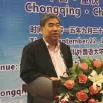
Lin GuijunVice President of University of International Business and EconomicsChina Achieving Development and Progress in the Global Value Chain by the Promotion of B&R Strategy
The B&R initiative is a new powerful force, not only supporting enterprise transfer along the value chain and cluster development, but also realizing the collaboration of upstream and downstream industrial chain, establishing the complete system of research & development, production and sales
As our fast development in global value chain, we should not neglect the pushing force of free trade area (FTA) development. In order to participate in the global value chain, developing countries are actively negotiating for free trade agreement with the developed countries. China's FTA strategy can be described as “The high standard free trade area network relying on the surrounding countries, radiating to the B&R area and facing the world”. Factors affecting our FTA establishment include global value chain, introduction of foreign capital and technology, export markets (traditional markets, seeking new markets), energy resources supply security, excess capacity output. Our strategic key directions firstly include the integration of global value and the introduction of advanced technology to stabilize the traditional market (developed countries) and to promote domestic reform. Secondly, we should develop new markets along the B&R countries and regions, and output our excess capacity,ensure our energy and resource supply security, in order to realize the strategic rebalance. Only by studying these problems and solving them, can we realize the further development and progress in the global value chain in the future.
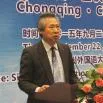
Jiang Yuechun,Director of the China Institute of International Studies' Department for World Economy and DevelopmentChongqing will give full play to its unique advantages in the progress of building the new Silk Road Economic Belt
B&R initiative infl uences Chinese economy in three aspects. Firstly, China has its advantage in infrastructure building, which has already caught the worldwide attention. Besides, China is good at cost control and has accumulated best international practices during its overseas construction projects under the policy of “Going Out”. Secondly, this initiative will help China build global industrial chain. Over the past decades, Chinese enterprises have been placed at the low end of the industrial chain. B&R initiative may change its current status, providing opportunity to maximize the profits. Thirdly, China has been on a fast track of economic transformation and upgrading. China's Council has unveiled a national plan, dubbed "Made in China 2025" in 18 May, which is China's fi rst 10-year action plan under the policy of “strengthening China by developing manufacturing industry”. This plan, with such strategic focuses on information technology, high-end equipment, new material and biological medicine, attempts to accumulate best social resources so as to forge ahead the development of competitive and strategic industries. As for the interconnectivity of energies and infrastructures, “the Belt and Road” Initiative may help carry out the "Made in China 2025" Plan, which, in return, will provide solid industrial support. The seamless connection of the two endeavors is of strategic importance for the implementation of innovation-driven development strategy and the acceleration of economic transformation and upgrading.
As for Chongqing's position in the construction of “the Belt and Road”, his answer is the following. Chongqing, being the sole municipality directly under the central government and the only one national central city in west and middle China,is the gateway of south-west China. It has and should play a strategic role in the new Silk Road Economic Belt. It is the strategic starting point of the Eurasia corridor, connecting the north-west through Yuxin'ou international railway. It is a hub along the Yangtze River Economic Belt, as it connects the east region by the Yangtze River, a vital transportation waterway. Through the roads in Yunnan and Myanmar, it connects the 21st-Century Maritime Silk Road by the south-west economic corridor including India, Bangladesh and Myanmar. Naturally, Chongqing enjoys a solid industrial foundation and great potential for development. It tops the list of south-west cities in terms of GDP growth rate, value of industrial output, import and export, and the introduction of foreign capital. More than 200 of the Fortune 500 companies are doing their businesses in Chongqing. Industries such as food, energy, logistics, and tourism enjoy steady development, while others like electronic information,automobile, equipment manufacturing, chemical engineering and material continue to grow in size and industrial cluster is taking shape. Big data industry is growing increasingly. E-commerce,offshore finance and other emerging service industries are springing up. High-end manufacturing equipment industry is showing highlights continuously. With the growth of Chongqing's industrial advantages and competitiveness, it is believed that Chongqing is bound to tap its potential in its unique advantages and play a better role in the new Silk Road development.
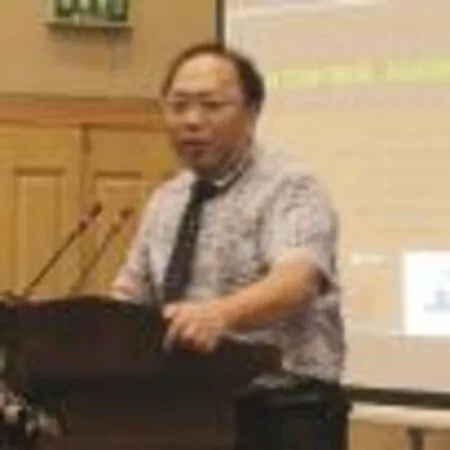
Pu YongjianVice Dean of Institute for Sustainable Development Studies of Chongqing UniversityAs for Chongqing's involvement in the B&R lnitiative, importance should be attached to demand, comparative advantages and industry extension
When getting involved in B&R Initiative, enterprises in Chongqing need to consider the following three respects: demand, comparative advantage, and industrial extension.
First, demand. Investors are supposed to identify their right investment fi elds, fi guring out the needs of countries along the B&R route. They are, in the short term, all in urgent need of infrastructure, therefore a priority area of investment. Second,comparative advantage. Most of the countries along the B&R route are developing countries, with products of comparative advantage still in the stage of primary processed products. Enterprises in Chongqing, however, may be comparatively advantageous in this regard. Third, industrial extension. Chongqing is vigorously developing its headquarter economy,and relevant industrial chains can be extended to the countries along the route by taking the comparative advantage in labor cost. Of course, investment involved in the B&R initiative is likely to be relatively low with respect to cash-to-cash return. Currently, the average rate of return on infrastructural investment is less than 3 percent. This rate can be lower when investors are investing and fi nancing platforms of local governments. But from a macroscopic perspective, developing infrastructure will indeed bring about enormous social benefi ts. On the whole, the investment demand generated by B&R helps China to identify its new way out of overcapacity. This demand is not only conducive to short-term economic growth and job creation, but it exploits China's long-term development potential as well.

Liu Youfa,Former Consul General of China in BombayOverseas chinese enterprises should seriously cope with both traditional and non-traditional security issues.
The economic globalization has involved China into the Global Village”. The Belt and Road construction is bound o help to extend Chinese economic and benefit frontiers to he international level. During the process of organizing and participating relevant projects and business cooperation, our government and enterprises stakeholders should earnestly prepare for and deal with both traditional and non-traditional security issues.
Traditional Security Risks Researches show that there are still problems left by WWII along the Silk Road. North Korea and South Korea are on the verge of conflicts at any time. As America gradually withdraw its troops from Afghan, the Afghan econstruction and national reconciliation have been officially put on the agenda in the international society. However, the war utterly destroyed the traditional national culture and economy;ore the national cohesion bond, bred mass terrorists and extremist forces bases, which made Afghan a high-risk country in B&R construction. Due to territorial and national disputes, the relevant countries in East Europe are growing toward the edge of military conflicts. America and Japan join hands with some Eastasian countries to provoke East China Sea and South China Sea issues, trying to drive a wedge among the ASEAN countries and subtaging their wish to participate the B&R initiative construction.
Non-traditional security risks---B&R construction will be advanced in areas with high risk in traditional and non-traditional security incidents. Meanwhile China and countries along the Silk Road will face threats in terms of non-traditional security. such as the damage of earth ozone layer, the lost of biodiversity,the spread of Ebola and other infectious diseases. They are not merely threatening any country's security, but also threatening the integral security interests of all the human beings. which may all affect country's economic security.
Studies indicate that under the infl uence of internet and hightechnology, terrorism and extreme forces' invasion and means of attacks against sovereignty, enterprises and residents are increasingly varied. It proved that when the traditional security threats form sprouting, incubating, intensifying to military conflicts, they usually follow a process from accumulative contradictions to gradual- evolution nature with signs shown,so people can take accordingly preventive measures. However,many non-traditional security threats arrive in the market suddenly, which makes relevant countries, enterprises and individuals into dilemma of rush response. Meantime, modern human still encounter many unsolved mysteries when exploring earthquakes, tsunamis, hurricanes and other natural disasters, together with the imbalanced development in economy and technology among countries. As a result, many countries lack early warning capability for disasters. When the relevant security incidents break out, the severity, impacts and damages are far beyond the expectation of the involved countries even the international society, which thus brings immeasurable political and economical loss to the projects and enterprises related with B&R Initiative. The evacuation of nationals in Libya showed that overseas Chinese enterprises became the target of terrorists and hostile forces. The era when Chinese have enemies abroad has been a history.

Dennis SmallEditorial Board of Executive Intelligence Review, USAl hold an optimistic view regarding the prospects for America's cooperation with China's "One Belt, One Road"
He bring us an emphatically optimistic view regarding the prospects for U.S. cooperation with Chin's "One Belt, One Road" global development perspective in the period immediately ahead. His grounds for optimism resides in the fact that the "win-win" strategy and philosophy promoted by President Xi Jinping strikes a deep respondent chord in the U.S., a chord which is at the very root of the founding Constitutional principles of the United States. Such forward-looking areas of cooperation between the United States and One Belt, One Road will require a full reorganization of the presently bankrupt trans-Atlantic system,by the global application of the Glass-Steagall principle, and then creating the institutions of a new credit system (not a monetary system), along the lines designed by Alexander Hamilton. The beginnings of such areorganization have been set in motion by the BRICS nations' creation of the New Development Bank and Contingent Reserve Arrangement, whose intention is to fi nance great development projects, and not feed the speculative cancer which is killing us. Lyndon and Helga LaRouche have therefore called for the United States and Europe to join the BRICS in this process, and abandon Wall Street and the City of London to their own much-deserved fate: bankruptcy and burial. To achieve this, the United States will have to return to its better self: the Leibnizian principles of physical economy on which the nation was founded. That, indeed, is cause for optimism.

Li QingSecretary-General of Guangdong Research Institute for International Strategies of Guangdong University of Foreign Studieslt's urgent to train large numbers of managerial and technical personnel for multinational companies
The key to Guangdong's implementation of the new Maritime Silk Road strategies mainly is to foster the investmentoriented multinational companies. First, cultivate an array of multinational investors engaged in maritime Silk Road investment and management. Second, encourage multinational enterprises to invest in the countries along the new road. Take an active part in the resource development and cooperation. Third, cooperate with foreign enterprises. Through long-term trade agreements,contracting with own capital, shares, BOT and other methods,hire the work of water conservancy, transportation, energy and other infrastructure projects, support strong companies to invest overseas and contract high-technology projects, encourage enterprises to invest in energy, construction, telecommunication,banking and so on. By means of M&A, reshuffle, alliance and others, strive to exploit mineral products, crude oil and other resources, build a multiple, stable and reliable resource supply base.
Another important issue, the joint establishment of new Maritime Silk Road requires all kinds of talents who have a strong fluency in relevant languages, knowing well of not only cultures, customs, economy, foreign trade and finance but also national conditionals, laws and policies in the relevant countries. Only if we cultivate a group of management and technology talents in multinational enterprises, can we boomthe strategic implementation of the new Maritime Silk Road and keep a sustainable development with Chinese economic and trade relations. It also requires the government through human resource strategy to intensify the training of international talents. Domestic backbones can be sent to study or work overseas to enhance their abilities, so as to foster a group of professional personnel who know the management rules and manage companies with masterful techniques, and adapt the international demands. Introduce overseas students, personnel with overseas working experiences, and employ some university teachers with overseas study background to train the advanced talents.
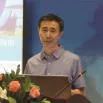
Feng LeimingSecretary-General of Tianjin Institute for International DevelopmentThink Tank should be concerned in the construction of "One Belt One Road"
Think tank is an important carrier of the country's soft power, and plays an irreplaceable role in foreign affairs. Ever since the "One Belt One Road" was proposed, contributions were made for research in various tanks, which has fully played an important role in governance. But right now there is no infl uential and international visibility of high quality tanks, especially the high quality research results. Researches in colleges and universities are relatively weak in the country, which request to strengthen research to deepen the "One Belt One Road" study of national level, and to build a cooperative network with relevant countries. In the strategic context of serving "One Belt One Road", its new strategic and diplomatic issues have become the focus of many studies of think-tank.
In the construction of "One Belt One Road" there will be a large number of various reality problems which need to be solved. Carrying out proactive, targeted, and reserved policy research, Chinese related language colleges should based on " diverse languages features" and "multiple culture advantage","research platform" and "bridge of going out" of all kinds of elements and functional positioning, to build a "One Belt One Road" strategy in aspects of talent training, academic research,social service, and humanities exchange, carrying out full, and multiple levels of training and advisory, and building a platform for promoting China and the silk road national humanities exchange.
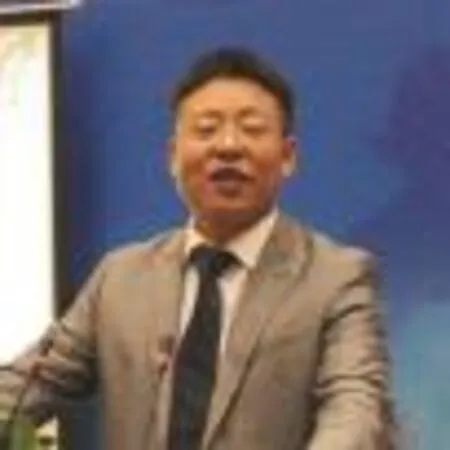
Yang BaiSecretary-General of Chongqing Research Institute for International StrategiesFour Points on Promoting Chongqing's Port Economy Development
The initiative to jointly build the Belt and Road forms a new pattern of all-around opening-up. Chongqing has a great potential to be built as a strategic fulcrum for the Belt and Road. Therefore, supported by the Communist Party of China Central Committee and the State Council, Chongqing has been gradually forming an opening-up characteristic with three trinities, which are three transportation hubs of railways, river ports and airports,three f category-1 ports and three free trade zones. This is the unique characteristic compared with other inland cities in China. Under the guidelines of the Opinions on Supporting the Foreign Trade Development by Improving the Port Services issued by the State Council on April 17, 2015, Chongqing should seize the new opportunity in developing port economy, and take the advantages of the inland open platform with three trinities, which is very important for Chongqing to establish itself as the strategic fulcrum of the Belt and Road.
Looking back to the history of the world economy development, the rise of an international metropolis is mostly due to the well-developed port economy. Compared with the mature port areas in domestic and overseas, Chongqing's port development is still underdeveloped recently, but it is pretty close to be developed. There are 3 patterns of developing port economy: the first one is to secure the stable development of both manufacturing and import and export industries, while developing the third industry vigorously; the second one is to secure stable development of manufacturing industry, while developing both import and export industry and the third industry;and the last one is to develop the manufacturing, import and export and the third industries equally. No matter which pattern is adopted, it will facilitate Chongqing's port economy to achieve a leapfrog development. In his opinion, there are four points on promoting Chongqing's port economy development as follow:
1. Starting from the general machinery industry as a sally port to explore foreign trade pathways of all industry integration;
2. Making the port headquarter economy into the engine of open economy;
3. Considering international cultures to boost the development of port economy;
4. Conducting system innovation to optimize the soft environment of the port economy development..
International Symposium on Opportunity & Pathway of Chongqing Open Inland Economy, B&R's Profound Impacts on Eurasian Economic Pattern
□ Written by Zeng Rui Photo by Wu'An
